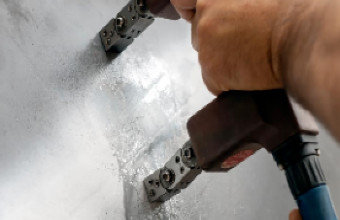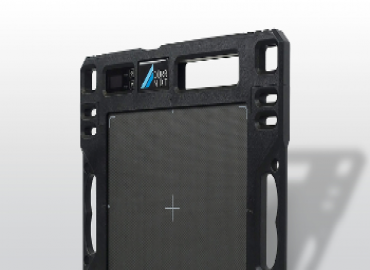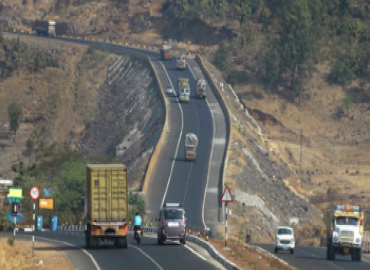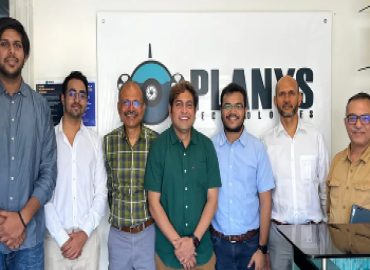Image source- Getty Images
While magnetic particle inspection techniques have stood the test of time, the equipment involved has seen updates to keep up with demand, experts say.
Magnetic particle inspection validates that there are no structural defects, fatigue stress, or cracks in the parts. The technology, which can apply to existing, in-use parts or newly manufactured parts and components requiring integrity testing, has been around for over a century.
Magnetic particle inspection usually ensures that such end-products will function as intended because manufacturers are responsible for the integrity of their products.
Bob Welsch, Vice president MQC Labs says, "In most cases, magnetic particle inspection (or MPI) is a matter of life or death. This testing is instrumental and helps find flaws in the raw materials before their usage. When you think about what goes into amusement rides, the locomotive industry, and aerospace technology, all of them use these materials, and they must test them for safety. Anyone in the business, like Blue Origin, Space X, the military, Boeing, Lockheed, and Raytheon, relies on MPI to ensure the safety of their products. And not just MPI, but non-destructive testing (NDT) is used in almost all industries we rely on."
Defining MPI
A magnetic particle inspection is an approach to determine the integrity of the material by studying magnetic flux leakage. The inspection particles are either in visible dry particles or wet fluorescent suspension — black light versus visible light, says Welsch.
Matt Parker, vice president of Parker Research Corp, says, "It's a non-destructive testing type used in magnetic fields to magnetize a test piece. Once the material or product is magnetized, we use iron particles to flux areas to test its strength and integrity."
While magnetic particle inspection is the primary non-destructive testing method confirming the integrity of most components, it keeps these products safe in almost everything from steel to aerospace to amusement parks — most people "have no idea what it is," Parker adds.
Evolving types of equipment
While magnetic particle inspection techniques have stood the test of time, the equipment involved has seen updates to keep up with demand, experts say.
"Some companies might look for a smaller cheaper [unit], and they use it and burn through it, and some units last 20 years," says Parker.
According to Welsch, some magnetic particle inspection equipment is designed for field testing with handheld yokes for refined work, and some are stationary machines for more advanced testing.
Part-specific magnetic particle techniques have changed in the last decade or so to include digital images of the component test setup, says George Hopman, president of NDE Solutions.
"These images are also annotated to document where either the AS5371 shim location or where the Hall effect gaussmeter measurement was taken," he explains — two tools necessary to confirm that the proper magnetizing strength was used during the inspection. "Robotics has improved the efficiency of repetitive magnetic particle inspections on large numbers of the same part that are characteristic of the automotive industry," he adds.
Welsch only predicts a little near-term change for the field, however.
"I don't think the industry will change much in the future," he says. "It's a vital field and touches almost every industry. MPI and NDT are the imperative forms of inspection, and it's a proven and reliable process that's used across the board."
The pandemic's impact
The pandemic has exacerbated the nationwide shortage of non-destructive testing personnel, including magnetic particle inspection practitioners, Hopman says.
Welsch says, "The NDT industry generally sees a huge shortage of certified personnel. The average age of our inspectors is around 50, and it takes many hours to get trained and certified in this industry. As the older generation moves on to retire, we will need to pass on this knowledge and need more inspectors to fill the void. It's a great career option."
Parker has partnered with training schools to help increase the pool of certified candidates because of the longtime shortage.
"There are now a lot of schools for people to get training on the equipment. But you could have a Ph.D. who comes out and does the testing, or other types of non-destructive testing (NDT), or one that heads up a program, or it could be someone just out of high school who goes straight to a training center to get certified," he says.
Although Parker's business ebbs and flows with the economy — more infrastructure development merits the production of raw materials — his company has remained busy throughout the pandemic. Supply and labor shortages have remained an issue.
Welsch has had a similar experience. He says, "Throughout the pandemic, our services were considered essential, so we worked right through it. "We didn't shut down for one day because so many industries depend on magnetic particle inspection and non-destructive testing," says Welsch. "Of course, we all had to adapt to the protocols issued by CDC for workplace safety. And, of course, there were workforce issues when people were getting sick and having to take time off, and we had to adjust our workflows."












